Exploring the Acropolis of Athens, Greece
- Eryn

- Jan 24, 2023
- 6 min read
Updated: Feb 6, 2023

Rising out of the landscape of Athens, the Acropolis has been a distinct landmark of the city for thousands of years. Today, it is a UNESCO World Heritage site and among the most recognizable archaeological sites on Earth. A plateau of limestone regally overlooking the capital of Greece, the Acropolis was a place of both mythical and physical power as the heart of Ancient Greece. Just like the ruins of Delphi, the Acropolis of Athens is filled with the mystique of legends of old. Here, the history and mythology of one of the most powerful ancient civilizations come alive.
Tip: We visited the Acropolis just before it closed at sunset, and it was the perfect time to miss the crowds and catch golden hour!
"Acropolis" means "high city," or citadel, in Greek and ancient acropolises can be found across the country. However, when people say "The Acropolis," they usually mean the Acropolis of Athens.
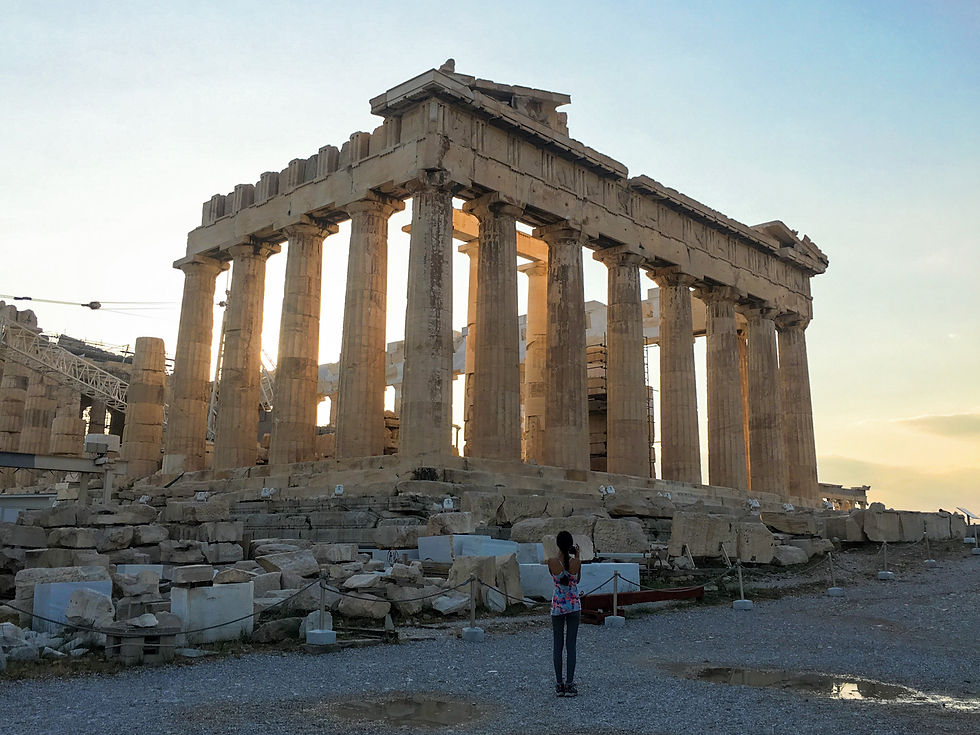
Flattened by thousands of years of construction, the plateau of the Acropolis has been recognized as a seat of power since as long ago as the Bronze Age. During the 13th century BC, the Acropolis was the center of a Mycenean kingdom. At that time, it is thought to have housed a compound that was surrounded by a huge fortifying wall, parts of which are still preserved today!
It was only later in history that the Athenians of Ancient Greece began to establish themselves on the Acropolis. In the sixth century BC, Athenian monumental temples and buildings began to appear on the Acropolis, many of which were dedicated to Athena, the Ancient Greek goddess of wisdom. These early structures formed the extravagant sanctuary of the cult of Athena and were the site of many of the city's greatest religious festivals.
Unfortunately in 480 BC, the Acropolis was attacked and pillaged by the Persians, so little of these first treasures remain today. Instead, the magnificent temples we now see atop the Acropolis came later in the middle of the fifth century BC during the Acropolis's Golden Age. But before we can see the world-famous structures at the top of the Acropolis, we must begin at the bottom.
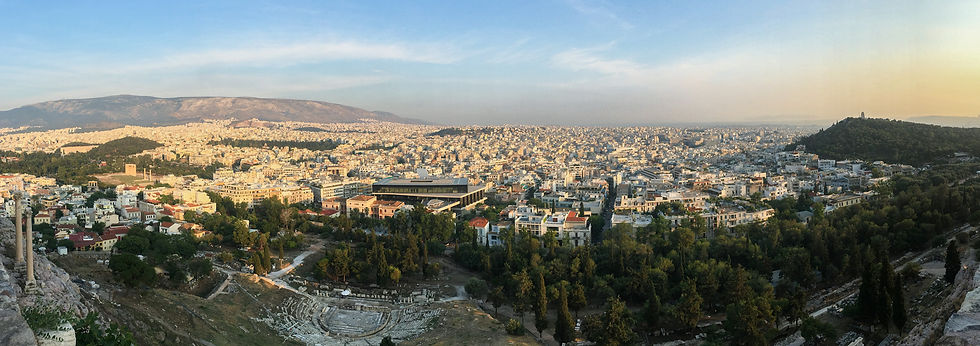
The Acropolis Museum
Our journey begins at ground level in the Acropolis Museum located at the foot of the Acropolis itself. The museum is designed to house all artifacts excavated from the archaeological site, and it truly gives you the opportunity to delve into the Acropolis's treasures. With its tall glass panes, modern architecture, and of course, modern visitors, the museum serves as an important link between new and old.
Enter the Acropolis
Having delved into the collections of the Acropolis Museum, it comes time to begin our ascent up the Acropolis itself.
Tip: just a 2-minute walk away from the museum is the southeastern entrance of the Acropolis. It's closer and smaller than the main entrance which often means fewer people!
Ancient Theaters
As soon as you enter and make your way up the steady incline of the path, among the major ruins you encounter are the ancient theaters of the Acropolis.
First is the Theater of Dionysus, the oldest theater on Earth and the birthplace of the craft of Ancient Greek drama. Constructed in the sixth century BC, the theater was dedicated to Dionysus, the god of wine. It was continuously used and reconstructed up until the time of the Romans and at its peak, it could hold up to 17,000 spectators! As you walk among the marble stands of the theater, you can't help but imagine the elaborate plays it once held.
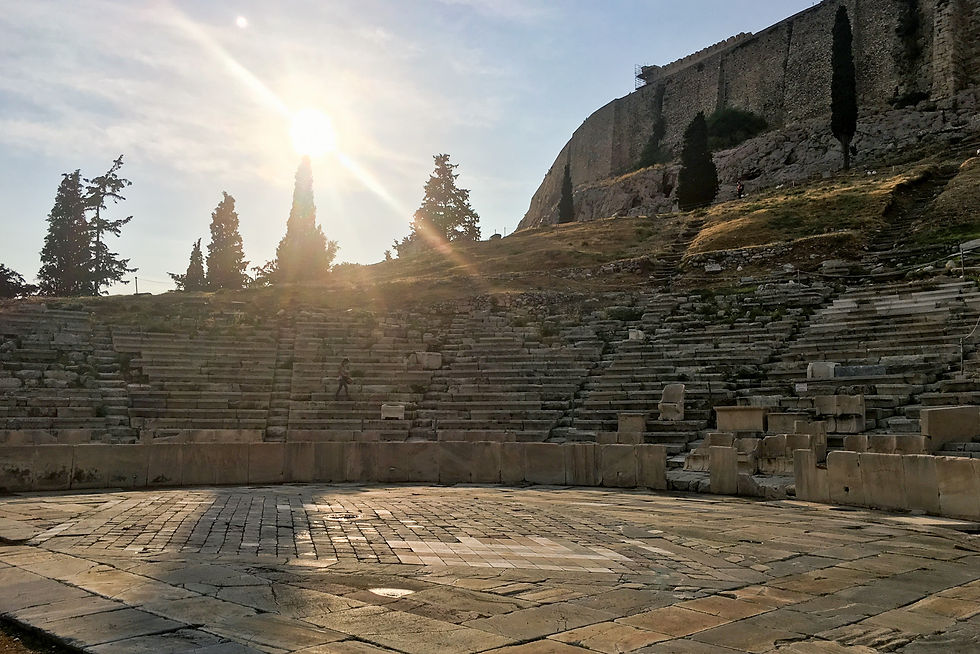
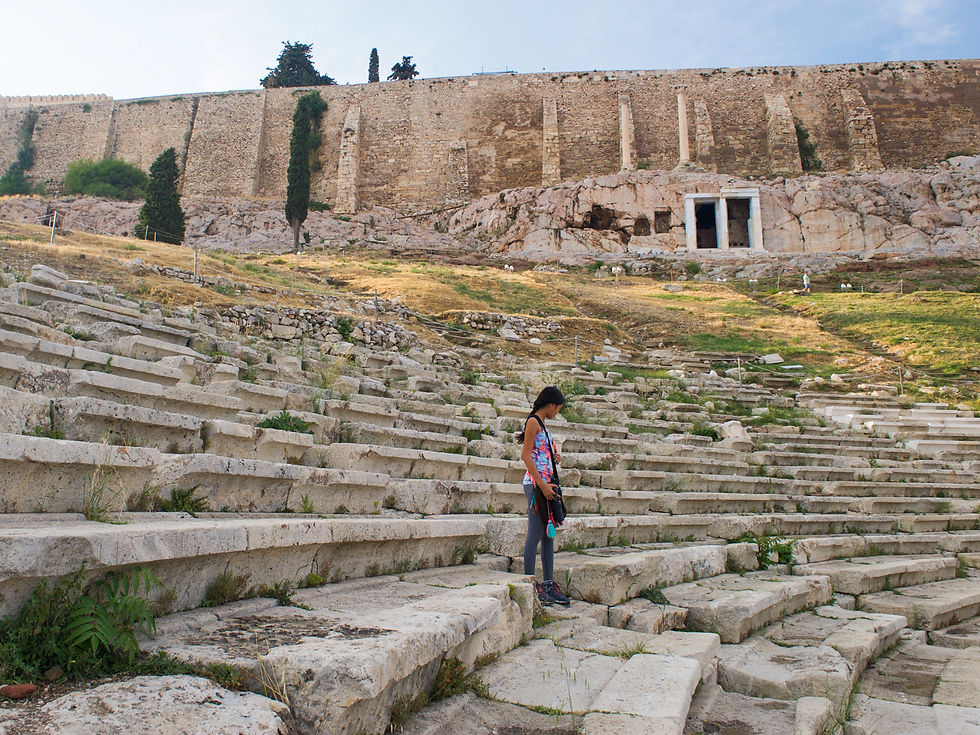
Trek on a little further beyond the Theater of Dionysus, and you'll soon find yourself overlooking the Odeon of Herodes Atticus. Built around 161 AD, it was the most prestigious theater in Athens during Ancient Roman times. Renovated in 1950, the Odeon of Herodes Atticus remains one of the oldest functioning theaters that is still holding festivals and performances today. Its history spans from featuring ancient dramas performed two thousand years ago to hosting modern legends like Frank Sinatra, Liza Minelli, and Elton John.
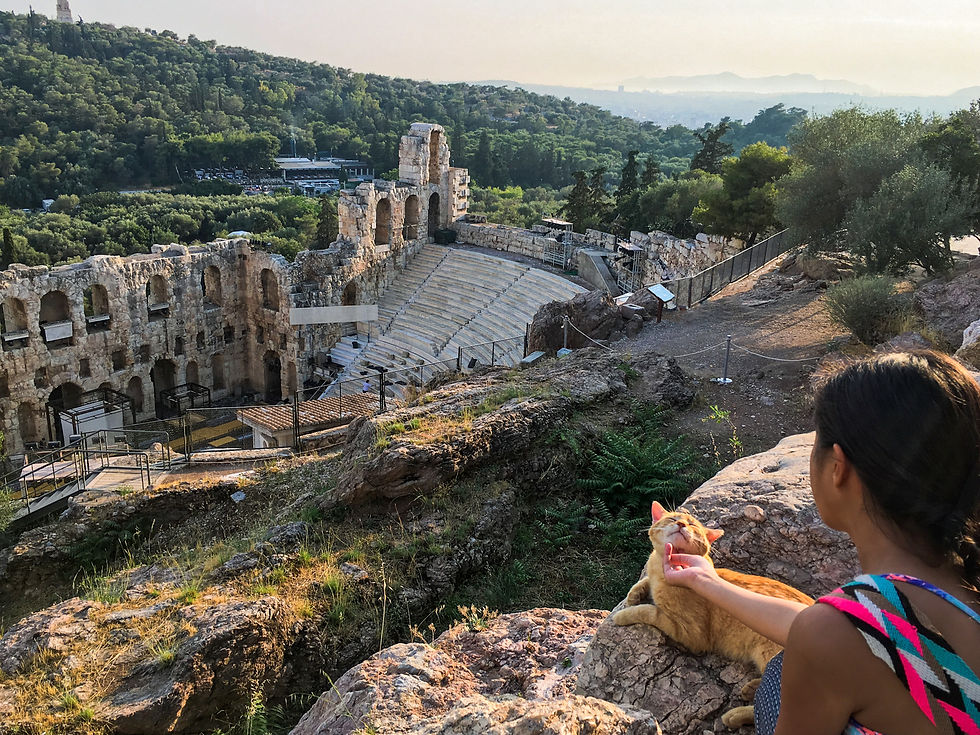

Continuing on from the ancient theaters of the Acropolis, we follow the slope of the path as it loops around the citadel. We wait in anticipation as our feet carry us up the hill, and it's not long before we start catching glimpses of the archaeological wonders that await us.

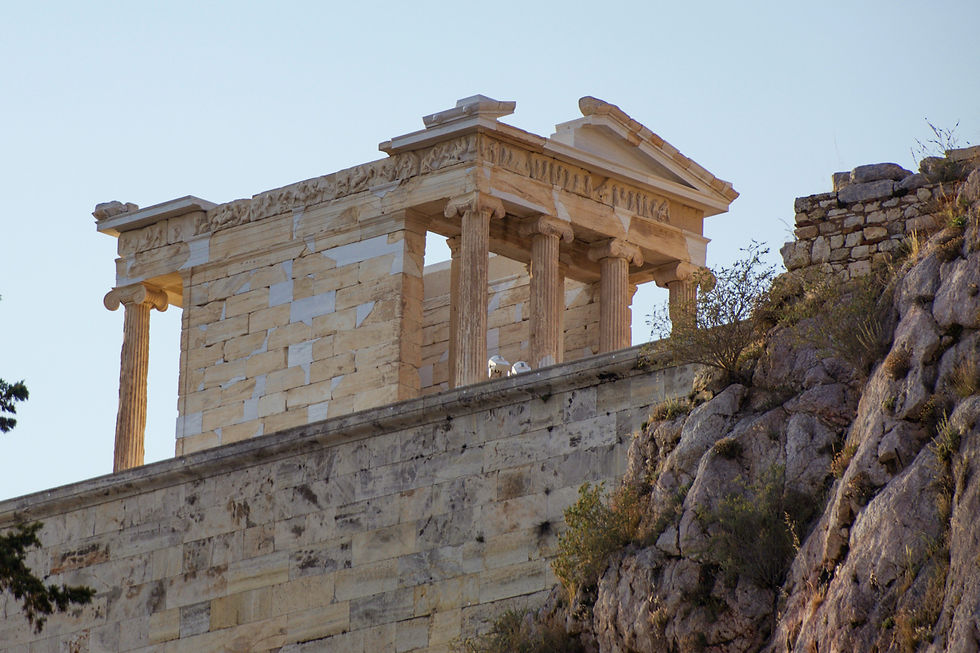

The Parthenon
After snaking up winding paths and climbing countless stairs of stone, suddenly, it all comes to an abrupt stop. Your surroundings open around you and the familiar incline of the ground has now leveled. You've arrived at the top of the Acropolis of Athens.

In the years following the Persian attack of 480 BC, Athens had become the greatest cultural center of its time and was at the peak of its power. Yet, the Acropolis largely remained in ruin. To live up to the city's glory, Pericles, Athens's leader, initiated a fifty-year construction project that brought us some of the most iconic structures of Ancient Greece.
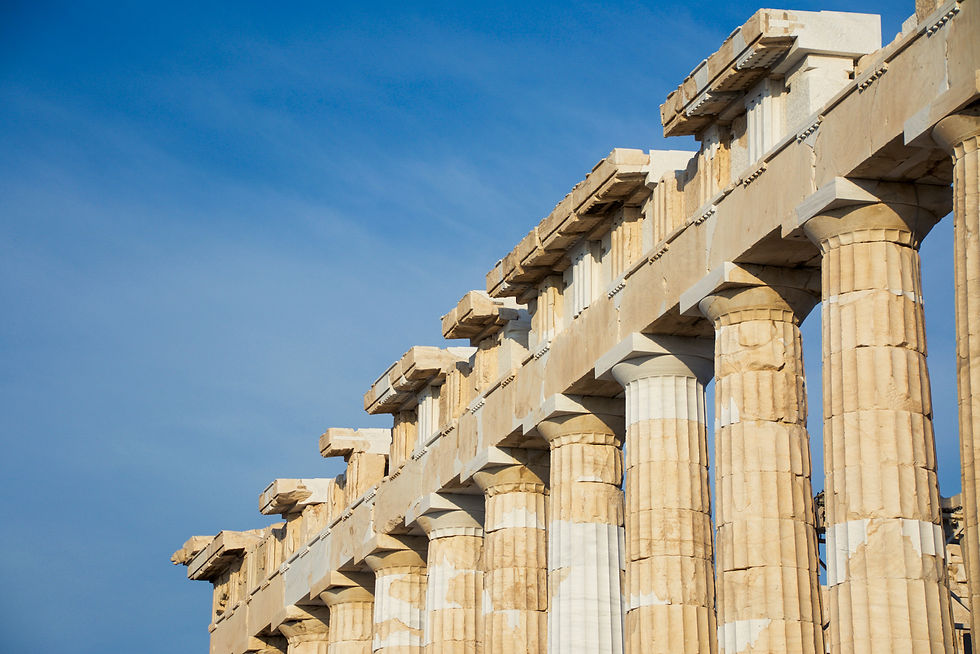
The first completed and largest building from Pericles's project is the regal Parthenon. As soon as you make it to the top of the Acropolis, the grandeur of the structure is clear to see. Made entirely of white Pentelic marble, a fine-grain marble from Mount Pentelikon, the Parthenon was a temple for Athena and was decorated with ornate sculptures and carvings that influenced art for centuries (you can see these in the Acropolis Museum!). At one time, it even housed a lavish gold and ivory statue of Athena that stood nearly 12 meters tall!
Apart from being a temple, the Parthenon also served as the treasury of the Delian League, a military alliance between hundreds of Greek city-states that was led by Athens. With its towering columns, the Parthenon was a true symbol of Athenian power. You can only imagine what it might have looked like at its peak.


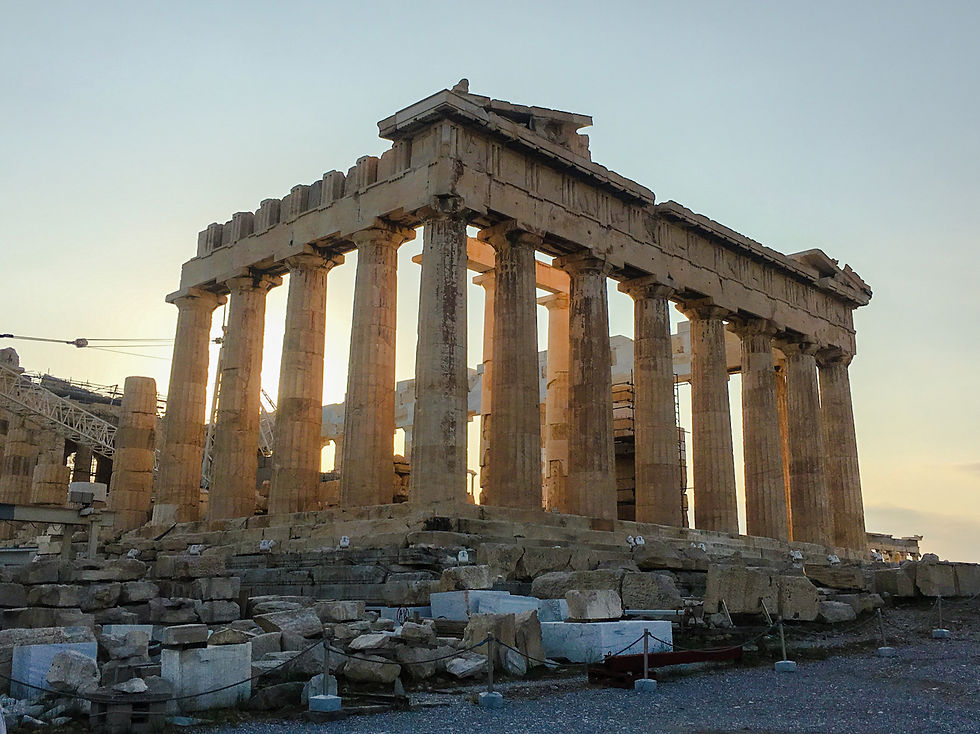
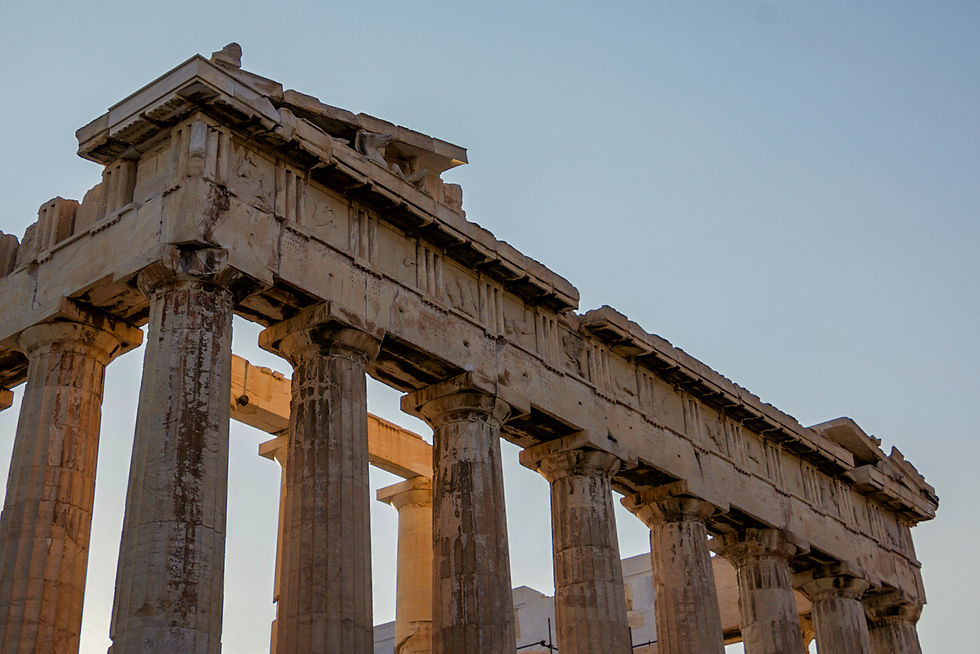
The Erechtheion
As magnificent as it is, the Parthenon isn't the only significant structure that you'll find atop the Acropolis. Opposite the Parthenon is the Erechtheion, a temple that accommodated the cult of Athena as well as worshippers of various other Greek gods. Since it housed multiple cults and is also located on uneven terrain, it is atypical in shape compared to other Ancient Greek buildings.
However, what the Erechtheion is perhaps most famous for is its terrace. Instead of standard columns, six marble caryatid maidens elegantly support its roof. As you watch the sunset behind it, you can truly appreciate the figures of the caryatids as they form delicate silhouettes in the golden light.
Along with other sculptures and carvings from the Erechtheion, five of the original caryatids can be seen in the Acropolis Museum. The sixth is held a thousand miles away in the British Museum of London.

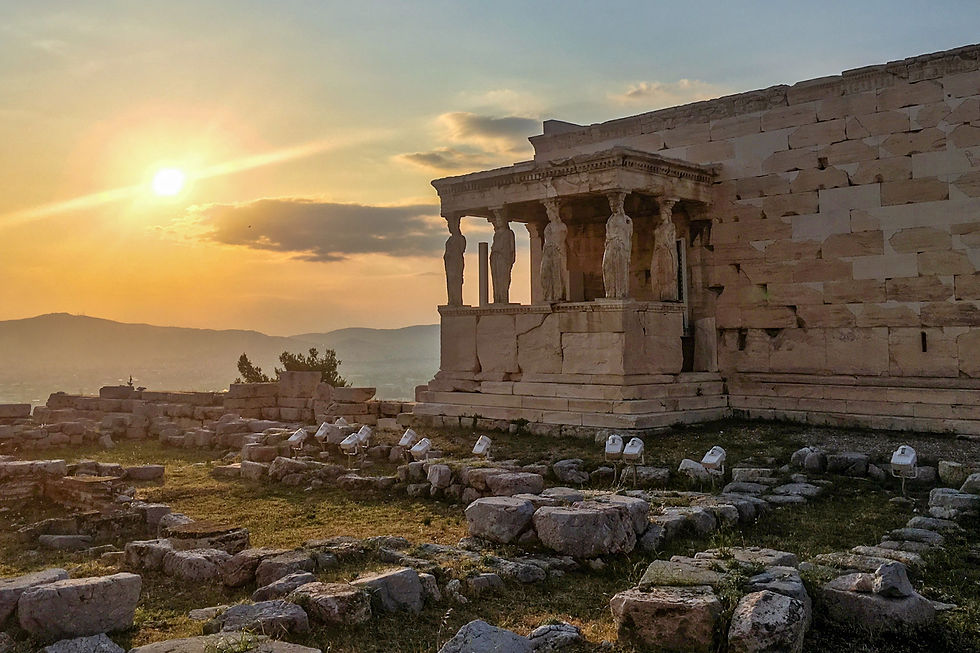


You may now be noticing the similarity between the names "Athens" and "Athena." This isn't a coincidence! According to Greek mythology, Athena became the patron goddess of Athens after competing with Poseidon, the god of the seas, for the title. The competition was judged based on the gifts that each god had to offer the city.
Poseidon used his trident to strike the ground and caused gurgling spring water to gush out of it. However, Poseidon's spring water didn't impress Athenian citizens because the water turned out to be salty like the seas of Poseidon's domain. Meanwhile, Athena planted a seed that grew into a great olive tree. This won her the hearts of the Athenians and her title as Athens's patron goddess.
Remarkably, the Erechtheion is said to be the very place where this mythical struggle occurred! Ancient Greeks believed part of the temple's stone paving preserved the marks Poseidon's trident left on the ground. Beneath the temple's floors was even a sacred saltwater well. Today, you can still see the olive tree standing beside the Erechtheion which symbolizes Athena's gift.
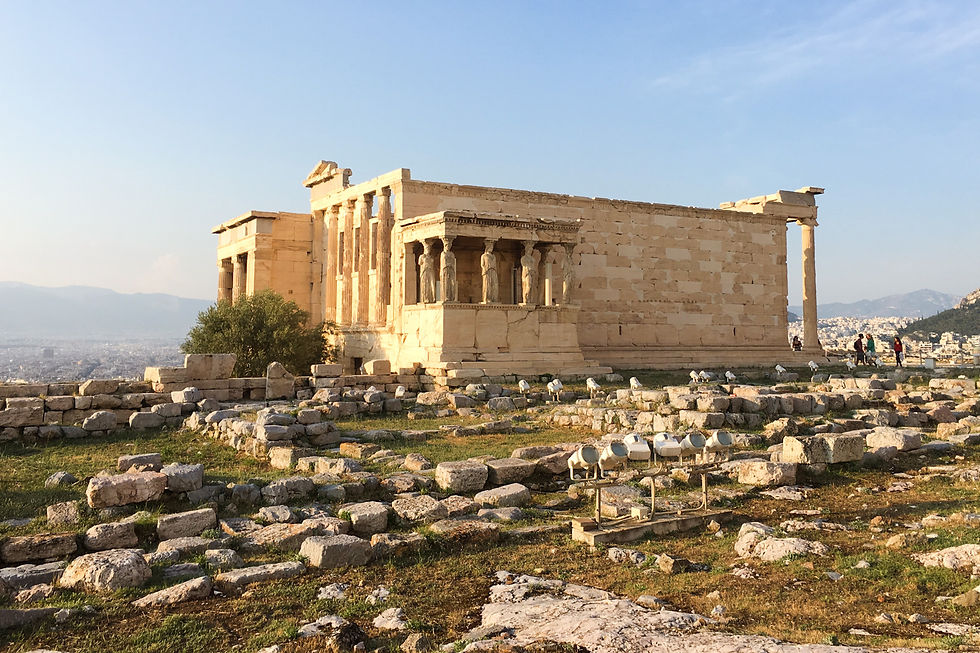
After the Golden Age
Long after the time of the Ancient Greeks, the Acropolis continued to witness history unfold. In the sixth century AD when Rome converted to Christianity, the Parthenon was rededicated to the Virgin Mary and in the eleventh century, became a cathedral. In the time since then, the Acropolis saw the Frankish occupation of Greece until the fifteenth century AD. After that, it was the Ottomans who took over. The ancient buildings atop the Acropolis soon became mosques, storehouses for ammunition as well as the Turkish garrison headquarters.
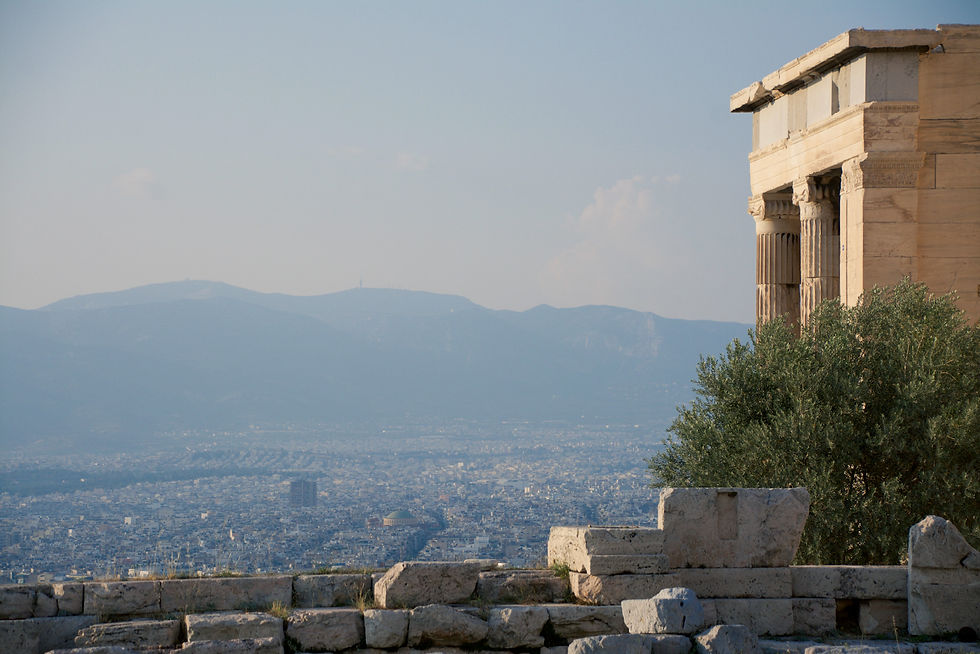
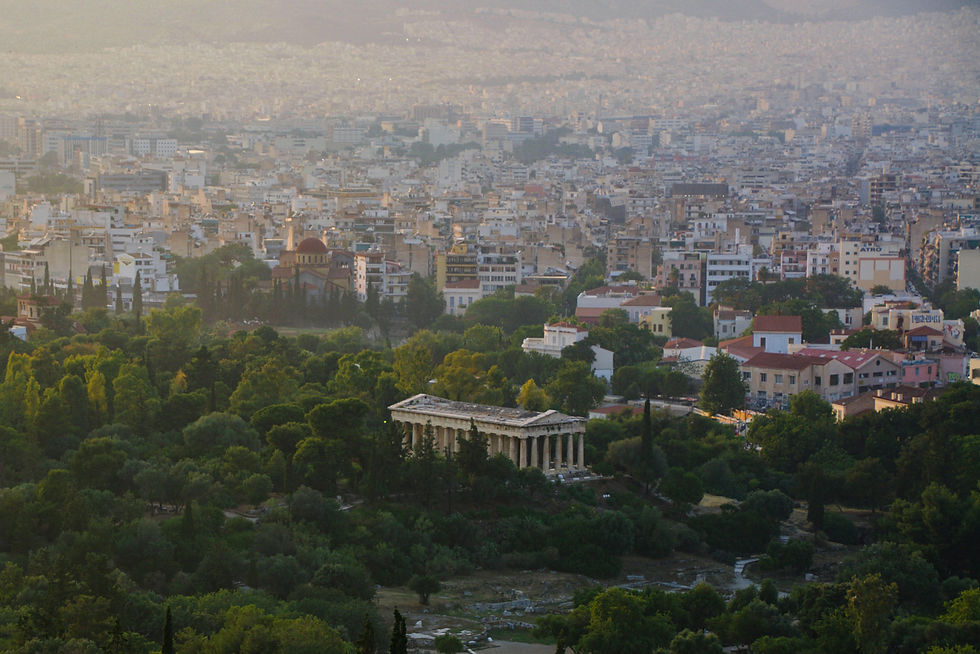
Unfortunately, as political powers changed, this wasn't without damage to the Acropolis. As the Turks faced the threat of a Venetian attack, they dismantled many temples for building materials. When the Venetians finally did attack in 1687, the Parthenon was destroyed by the siege and blown up by the gunpowder stored inside it. In the eighteenth century with the onset of tourism on the Acropolis, the ancient structures were left unprotected from looters and tourists who often took precious souvenirs with them.
Thankfully, uncertain times have passed for the Acropolis. With Greek independence, the Acropolis was returned to Greek ownership and in 1834, it was established as an archaeological site. Work began to excavate and document the history that had long been left as rubble, and restoration of the ancient structures is still ongoing. Thanks to these efforts, as visitors to the Acropolis, we get the unique opportunity to travel back in time and explore the mythology and history of this important part of the ancient city of Athens.
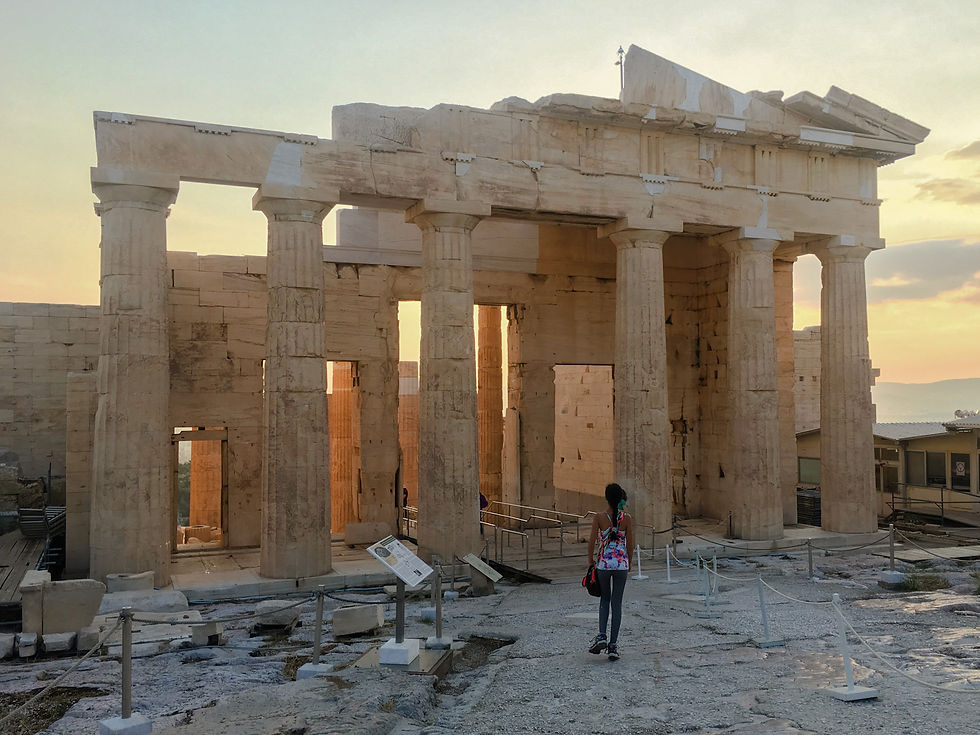
Sources:
We visited Athens in 2017 during our year-long trip around the world. Click on the link to read more!


















Comments